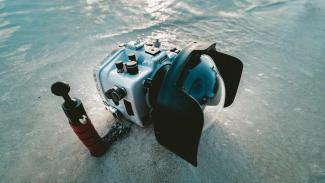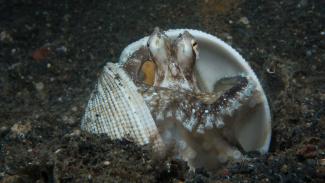
Jakob Owens
Buying all the kit to allow you to take photos underwater is not cheap, so you need to make your equipment lasts the test of time.
One of the major and most vital expenses is your underwater housing. Housings are often fragile and can require a lot of care and attention though. So what should you be doing to look after your housing and to make sure it has a happy and healthy life?
Follow our step by step guide guide to underwater housing care to discover how to get the most out of your set up, extend it's life and keep it safe from harm.
Dive day care
Ensure your underwater housing is kept somewhere protected at all times. If you are on a dive boat, make sure it is safe from rolling on to the floor and well away from the dive deck.
Try to keep your housing out of the sun. Direct sunlight can damage your housing and in the short term will increase the chance of your underwater housing overheating and the lens fogging up.
Try to avoid exposing your camera to temperature extremes, especially if it is a plastic housing and this can damage and weaken the plastic.
If you can, avoid entering the water with your camera, have it passed down to you instead once you have entered the water. If it is not possible to do this, make sure you can protect the camera from the main impact of hitting the water. If entry and exit to the water is difficult, consider leaving the camera behind - there will always be another dive that you can take it on.
As you descend on a dive, check your camera carefully. If you notice any bubbles coming from the housing, abort the dive and surface with the camera.
Use a strong lanyard or cord and ensure the camera is fixed to you at all times when you are in the water. It's also a very good idea to keep the camera attached to you until you are ready to climb back on the boat. If you drop the camera while swimming on the surface, it may be impossible to retrieve it.
When exiting the water, pass the camera up to somebody on board first. As soon as you are on board, make sure your camera is in a safe place, well away from tanks and divers and out of the sun.

Oliver Sjostrom

Wuestenigel
You might also enjoy...
Scuba Diving Terms - A Dummies Guide
Frans Daniels
Scuba-diving, like many activities seems to have a language all of its own, with confusing concepts, technical terminology and an ocean of jargon to decipher.
To help newcomers break through this barrier we've developed a dummies guide to scuba diving, so that you can get to grips with what divers are talking about. Find out what SCUBA stands for, what PADI is, what it is to be narked, and so much more.
Setting up your underwater housing
Have you recently purchased an underwater housing for your camera? Maybe you feeling a little unsure how to set-up your new system correctly and are feeling in need of some tips and advice.
Don't despair. No matter what brand your housing, whether it is a simple own-brand housing or a state-of-the-art set-up, there are steps you can take every time you take your camera into the water to ensure that it is set-up correctly.
Choosing the right dive center
Behang
If you are learning to dive or taking a diving course, it is important to have the right people around you and to learn in the right environment. Likewise, if you are already a diver who is planning a diving break, you want to make sure your dives are remembered for all the right reasons.
Negros & Dumaguete
Negros Island is a large island in the Visayas. It’s eastern shore is separated from Cebu by a narrow channel, while it’s west coast faces the Sulu Sea. Much of the diving is in the south of the island.
Like many of the Philippines dive spots, it is blessed with the combination of big fish encounters and fascinating smaller critters that will keep avid divers happy for many dives.
Underwater photography etiquette
Tara North







